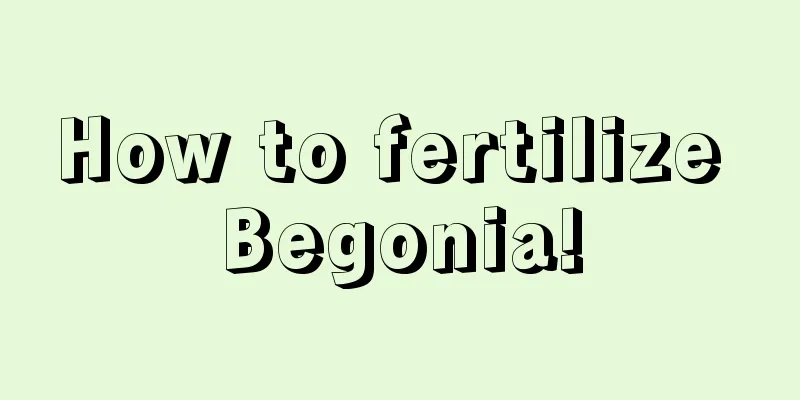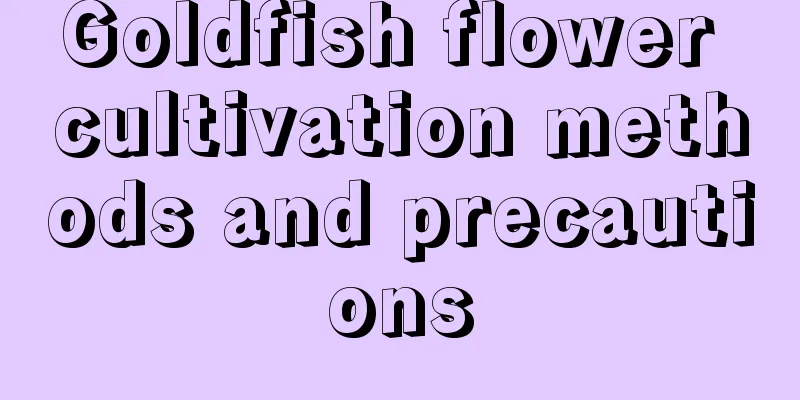How to fertilize Begonia!

Spring and autumn fertilization:When fertilizing Begonia in spring and autumn, the principle of applying small amounts frequently should be followed. In these two seasons, inorganic fertilizer or organic thin fertilizer should be applied as fertilizer, and liquid fertilizer is preferred. Summer fertilization:If the temperature reaches above 25 degrees in summer, no fertilizer should be applied. When the temperature is below 25 degrees, you can apply fertilizer once a week for two consecutive weeks. The time for fertilizing starts after the last flowering period, which will make the Begonia bloom again. Fertilizing seedlings:During the growth period of begonia seedlings, nitrogen fertilizer should be used as the main fertilizer, and the amount of fertilizer can be increased appropriately. Nitrogen fertilizer can promote the growth of branches and leaves of begonia. Fertilization during flowering period:During the flowering period of Begonia, phosphorus fertilizer should be used as the main fertilizer, and the amount of fertilizer can be increased appropriately. This can make the flowers of Begonia tender and bright, and increase the number of flowers. If fertilizer is not supplied during this period, the whole plant may wither, and in severe cases, it may die. Fertilization during the growing season:During the growing period of Begonia, fertilizer should be applied once every 10 days to half a month. The fertilizer should mainly be 20% rapeseed cake water, soybean cake water, etc. that has been decomposed and fermented. If the fertilizer is not completely fermented, it will cause fertilizer damage, causing the leaves of Begonia to dry up and even the whole plant to die. Fertilization precautions:Each time after fertilizing the begonia, use a spray bottle to spray water on its branches and leaves to prevent fertilizer from splashing onto the branches and leaves of the plant and causing yellowing. |
<<: How to water the Dracaena? Do these four things!
>>: How often should I water the Begonia?
Recommend
What fertilizer is best for growing yam?
Yam is an increasingly popular health food, and t...
Does green radish like sunlight?
Green radish likes sunlight and is also shade-tol...
How to trim Buddha's hand
Pruning principles Reasonable pruning helps the g...
Does Aspidistra prefer shade or sun?
Does Aspidistra prefer shade or sun? Aspidistra i...
The efficacy and function of neem tree
economy Neem is a very good wood. The material is...
The efficacy and function of jasmine tea
1. Antibacterial and anti-inflammatory Jasmine ha...
Can I plant a fan tree at home?
1. Can it be planted? You can plant fan trees at ...
Can I water the newly bought Kalanchoe? (How to water the newly bought Kalanchoe?)
"Water after it's dry" Kalanchoe is...
The flower language of random grass
1. Form Sesame grass, also known as sesame flower...
Don't let these 10 kinds of flowers get wet in the rain, otherwise they will die in half a day
Huahua checked the weather forecast today and fou...
Why does the golden diamond drop its leaves and turn yellow?
The reason why the leaves of the golden diamond t...
How long is the growing cycle of lettuce?
Introduction to Lettuce Growth Lettuce is suitabl...
How to grow the Qilin tree and what to pay attention to
Growth habits of the Qilin tree The suitable grow...
How to grow and water green radish
As a common indoor plant in homes, green ivy is w...
What kind of soil is suitable for planting cones
Soil for meat cones Conus generally prefers sligh...









